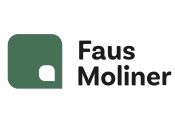Keys of the Stability Programme submitted by the Spanish Government to the European Commission and the EU Council of Ministers
The Stability Programme 2019-2022 submitted by the Spanish Government includes some of the measures recommended by the Spanish Independent Fiscal Responsibility Authority (AiReF)
Capsulas Nº 201
At the end of April, the Spanish Government made public the Stability Programme which, jointly with the National Reform Program, was submitted to the EU. Both the Stability Programme and the National Reform Program contain a set of proposals made by the AiReF (a Spanish body that, since 2017, has carried out a detailed evaluation of all public spending programmes) to the Spanish Government. In this occasion, AiReF’s proposals pursue the achievement of savings in public expenditure associated with medicinal products dispensed in pharmacy offices. No proposals regarding hospital expenditure have been presented by the AiReF. The evaluation of this budget line (hospital expenditure) will probably be made by the AireF during this year; which means that we will not know AiReF’s proposals on this area until the next update of the Programmes.
Because of their special interest, we summarize below the main measures announced in the Stability Programme and the National Reform Program.
Medicine selection processes at the national level
Without doubt, the most relevant proposal among those announced in the Programmes is the introduction of a national medicine selection system for medicinal products dispensable in pharmacy offices. The objective of this measure is to allow the public treasury to benefit from the margins currently received by pharmacies when dealing with this kind of medicinal products. Until now, these margins had been a breath of fresh air for the survival of the often-mistreated retail pharmacy.
Recommendations in this area point towards a purchase model based on tenders, with only one bid per laboratory, at a uniform price, and with an invitation to tender at European level (rather than a national level). The proposed model takes inspiration from Andalusia’s medicine selection system, but with corrective mechanisms such as the elimination of the exclusive supply or the use of the system only for medicinal products for minor pathologies and with high economic impact.
Definition of a new reference price system
Another proposal included in the Programmes is the review of the current reference price system. In this regard, the AiReF proposes a mixed system considering therapeutic indications (level 4 of the Anatomical Therapeutic Chemical -ATC- Classification System) and active ingredients (ATC 5).
The Programmes do not include other proposals made by the AiReF such as the introduction of an “avoidable copayment system” that would allow patients to choose between branded and generic medicinal products; or the increase of the economic return for those medicinal products at risk of being excluded from the market due to the their lack of economic viability.
Decision-making and sustainability
The Programmes announce measures such as the application of cost-effectiveness criteria in decisions related to reimbursed medicinal products; the introduction of a pharmacoeconomic evaluation method for medicinal products and its inclusion in Therapeutic Positioning Reports (IPTs); and the measurement of health outcomes of medicinal products. The Programmes do not include (despite AiReF so proposes) any mention to the replacement of the current Interministerial Commission on Medicinal Product Prices (ICMPP) by an independent body in which all regional authorities, jointly with the national ones, would be represented.
For the moment, it seems that the Government is planning a less ambitious reform of the ICMPP which will be aimed at increasing the number of representatives from the regional authorities in the current body.
The Programmes also foresee the performance of ex officio reviews of the prices of medicinal products for treating chronic diseases with a high impact on the NHS. The need to reach sustainability agreements with the industry is also stressed in the Programmes. In this regard, the Programmes endorse the agreement already subscribed with Farmaindustria regarding this matter and show a strong position in favor of its renewal.
Measures to monitor prescriptions and expenditure
Although this is a matter that mainly falls within the scope of the Regional Authorities’ competences (and therefore not the central Government ones), the Programmes include the following proposals: (a) the implementation and improvement of protocols for the supervision and follow up of prescriptions; (b) the enhancement of electronic prescription and incentive systems; (c) the introduction of periodic control systems over certain kind of medicinal products or group of patients to mitigate consumption deviations; (d) the interoperability of databases from different authorities, as well as (e) the development of educational plans aimed at the general public. All of the foregoing are, a priori, reasonable measures as long as they do not inappropriately interfere with the freedom of the physician to prescribe the medicinal product that he or she deems appropriate.
Measures to promote competition and innovation
Although the Programmes give no detail about these measures, the Programmes advocate for the promotion of generics and biosimilar products. For this purpose, the avoidable co-payment system proposed by the AiRef, which would allow innovators and generic manufacturers to differentiate by price, could be an interesting option. The Programme submitted to Brussels, however, does not endorse this option.
Finally, the Programme announces the Government’s intention to amend the system of mandatory discounts on the ex-factory price (PVL) of reimbursed medicinal products regulated in Royal Decree-Law 8/2010. In this respect, the Programme recommends eliminating the current mandatory discount for innovative medicinal products (currently 15%) and increasing the mandatory discount for the off-patent medicinal products that have been marketed in Spain for more than ten years (currently 7.5%).
